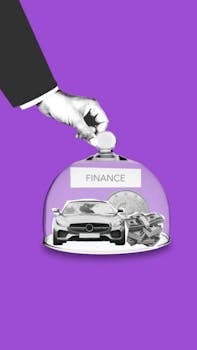Borrowing comes in many forms, but the choice between secured and unsecured loans trips up even savvy adults. You might ask yourself if putting up collateral is worth it, or if the ease of unsecured loans is the better path!
This decision matters for anyone eyeing a new car, funding a home renovation, or covering unexpected expenses. Choosing the right type of loan impacts your financial health and your peace of mind long after you sign.
If you’ve ever wondered which loan to pick—or simply want to avoid costly mistakes—stick around. We’ll walk you through every angle, so you can borrow confidently and achieve your financial goals.
The Basics Behind Loan Types
Before diving deep, let’s outline the foundation: secured loans use collateral, such as a car or house, while unsecured loans rely only on your credit and promise to repay.
Think of a secured loan as borrowing your neighbor’s lawnmower—you’ll return it, or risk losing future trust. Unsecured loans are like a handshake agreement: they trust your word and credit history instead of tangible assets.
- Secured loans often offer lower interest rates because lenders can recover losses through collateral.
- Unsecured loans usually have higher rates, as lenders take more risk.
- Lenders may require strict checks for unsecured loans, focusing on credit scores and income.
- Secured loans can help build or rebuild credit if you make payments on time.
- Examples of secured loans: mortgages, auto loans, home equity lines of credit.
- Examples of unsecured loans: personal loans, credit cards, student loans.
Understanding these core ideas is the first step to choosing a loan that strengthens—not strains—your financial foundation.
Everyday Borrowing Encounters
Imagine Jane, who wants a new car. She uses the car as collateral, so her auto loan has a manageable rate. If she defaults, the lender can repossess the car—that’s the secured part.
Sam, on the other hand, needs a quick $5,000 for emergency medical bills. He applies for a personal loan. The bank checks his credit history but asks for no collateral. If he doesn’t repay, his credit score suffers, but the lender can’t seize specific assets.
Consider Mike, who maxed out credit cards to remodel his kitchen. He got unsecured credit lines but now faces higher interest rates and monthly payments until he pays off the balance.
Together, these stories highlight critical trade-offs. Choosing between loan types depends on your immediate needs, your risk comfort, and what you can afford to risk as collateral.
Comparing Features: What Sets Each Apart?
Comparisons make confusing choices easier! Secured and unsecured loans differ in several ways—from interest rates to requirements and flexibility.
- Secured loans require a valuable asset as collateral, while unsecured loans need only your signature and credit score. This makes secured loans riskier if you can’t make payments.
- Interest rates tend to be lower for secured loans, as lenders face less risk. Unsecured loans compensate for higher risk through higher rates.
- Approval odds are typically higher for secured loans, especially if credit is poor. Unsecured loans sometimes demand excellent credit for approval.
- Secured loans may stretch over longer terms, spreading out payments, while unsecured loans usually have shorter repayment periods.
- For missed payments, secured lenders can take your collateral; unsecured lenders send delinquent accounts to collections and your credit rating drops.
- Secured loans suit large purchases (homes, cars), while unsecured loans work well for smaller, short-term needs like vacations or consolidating debt.
- There’s often more paperwork with secured loans due to asset appraisal, while unsecured loans are typically faster to process.
Choosing smart means weighing these factors against your situation—and your comfort with risk.
Risk and Reward: Borrower and Lender Perspectives
From a lender’s chair, making secured loans is like insuring a classic car. There’s value backing the arrangement—a safety net if things go wrong.
For borrowers, the risk is higher with secured loans—you could lose your asset. Yet you’ll typically pay less interest versus unsecured borrowing, where nothing but your reputation is at stake.
| Feature | Secured Loan | Unsecured Loan |
|---|---|---|
| Collateral | Required | Not Required |
| Interest Rate | Lower | Higher |
| Consequence of Default | Asset Seized | Credit Damaged |
Looking at the table, notice how each loan type’s risks and rewards weigh differently for you and the lender—there’s always a trade-off to consider.
Choosing for Your Situation: Factors to Consider
Imagine needing cash fast—you might jump for an unsecured loan for speed. However, if you plan to renovate your house, a home equity loan, secured by property, can offer lower rates.
Lifestyle goals matter, too. Planning for college? Unsecured student loans often help, though federal options come with unique terms. Want a family car? An auto loan—the car as collateral—could fit your budget.
Some people value flexibility above all and hate risking assets. Others focus on saving money even if it ties up property. The right answer often depends on your individual priorities and what you feel more comfortable with.
Choosing between secured and unsecured loans is like picking between renting and buying: one offers more flexibility and quick exits, while the other gives you more stability and sometimes better long-term differences in cost.
Common Pitfalls and Smart Moves
- Never overlook the fine print—unexpected fees sometimes hide in loan contracts.
- Borrow within your means: securing a loan with your home can backfire if your budget is tight.
- Compare loans from different lenders; even small rate changes add up.
- Check prepayment penalties; paying off early shouldn’t cost extra if you can avoid it.
- Be honest about your repayment ability: defaulting on a secured loan means losing an asset, on an unsecured loan means damage to your credit.
- Understand that high interest rates can double or triple costs over time.
Each of these tips keeps your financial footing steady. Loan agreements are powerful tools, but only if handled with awareness and good planning.
By actively applying these smart moves, you greatly reduce your chances of regret down the road. Being a wise borrower starts with asking the right questions and reading every loan’s details carefully.
Impact on Credit and Future Borrowing
Secured and unsecured loans can both build or harm your credit, but the implications look different. Consider someone paying their auto loan on time—that positive information strengthens their credit profile, helping future borrowing chances.
Mistakes, such as defaulting on a home loan, can mean foreclosure and long-term credit damage. Meanwhile, missed payments on unsecured loans lead to collection calls and a plummeting score that follows you for years.
Imagine Ashley, who paid off her student loans steadily. Her strong payment history opened better credit card and mortgage options, giving her flexibility in her financial life later on.
The clear pattern: use loans wisely, and your financial toolbox grows. Missteps, though, can limit big milestones like buying a house or starting a business.
Planning Ahead: Matching Loans to Your Financial Goals
If you need to borrow, always begin with a clear goal. Secured loans shine for major purchases, like a dream home or new truck, where lower rates matter over time. Unsecured loans suit short-term or flexible needs—think home gadgets or vacations.
Consider what would happen if your finances hit a rough patch. Would you be okay risking your car or house? Or would paying a bit more in interest for peace of mind be worth it?
Tracy wanted a boat, so she used a savings-secured loan—her savings acted as collateral, letting her borrow at a low rate without risking her house or car. This creative approach combined benefits of both worlds.
Ultimately, the proper loan fits your goals and your comfort level—there’s no one-size-fits-all answer, but knowing your options makes tough choices easier.
Wrapping It Up: Smart Loan Choices for a Better Financial Future
We’ve explored the practical, the possible, and the pitfalls of secured and unsecured loans. Whether you need a mortgage, new car, or quick funds, how you choose matters more than ever.
Every loan comes with risks and rewards. Understanding the differences gives you control, so you can borrow intentionally and avoid surprises—protecting both your assets and your future.
There’s no perfect loan for everyone. Yet, if you weigh options, read the terms, and plan for repayment, you’ll build a solid financial foundation—and peace of mind along with it.
Let this guide spark new confidence as you navigate borrowing decisions. Smart planning, honest evaluation, and knowing your priorities will always pay off, whatever the loan type.
Ultimately, the best approach is informed, realistic, and proactive. Make each loan decision count for your financial health—today and in the years to come.

